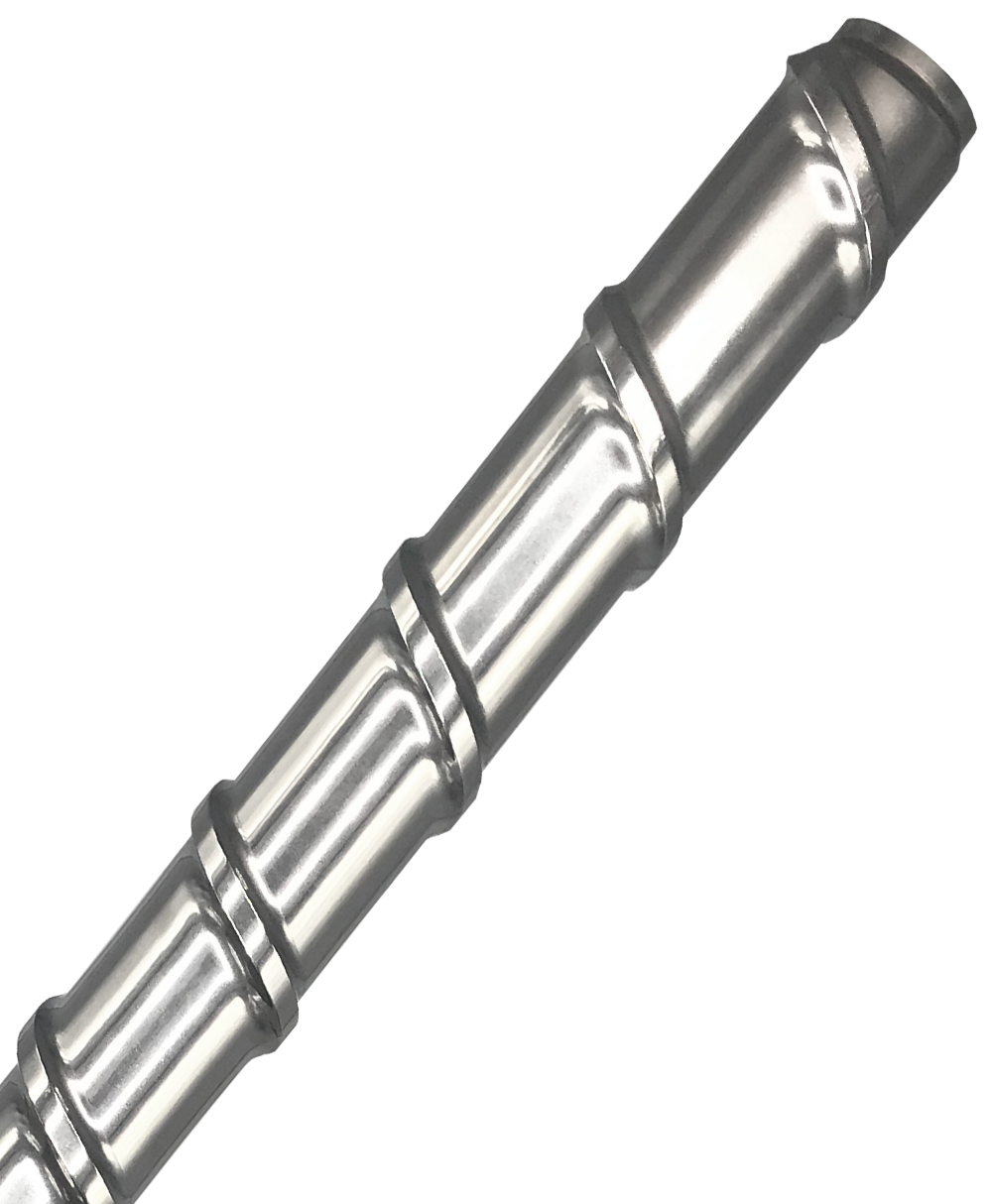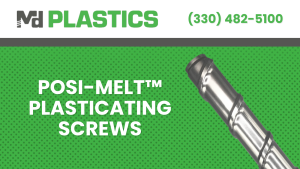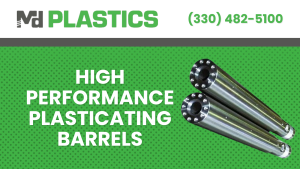In today’s competitive plastic injection molding landscape, efficiency and profitability are inseparable. As raw material costs rise and energy prices fluctuate, injection molders are under increasing pressure to adopt innovative solutions that can lower operating costs while maintaining high product quality.
At the heart of any molding process lies the plasticating unit—responsible for melting and preparing material for injection. Traditional reciprocating screw systems, while widely used, are often energy-inefficient and limited in their ability to handle advanced molding challenges. In contrast, two-stage plasticating systems are transforming the industry by offering significant energy savings, improved melt quality, and enhanced process stability.
This case study compares the two technologies from a performance and energy consumption standpoint, providing real-world data and a 12-month payback scenario that demonstrates why forward-thinking molders are turning to Md Plastics for a better solution.
Understanding How Two-Stage Plasticating Works
A two-stage plasticating unit separates the melting and injection phases of the molding process into two distinct components:
- Plasticating Extruder (First Stage): This is a short, non-reciprocating screw that focuses solely on melting and homogenizing the plastic resin. Because it’s not tasked with injection, it can be optimized specifically for efficient heat transfer and mixing.
- Injection Plunger (Second Stage): This component is isolated from the melting zone and is responsible only for injecting the molten plastic into the mold cavity. It delivers precise, high-pressure shots with minimal variation.
This architecture contrasts with the reciprocating screw, which performs both melting and injection functions using a single screw that oscillates within the barrel. The dual function compromises process control and typically requires more energy due to inefficiencies in screw retraction and injection force dynamics.
Advantages of Two-Stage Plasticating Over Reciprocating Screws
1. Energy Efficiency
The most notable advantage of two-stage systems is their energy performance. By optimizing each stage for its specific task, the system reduces the overall energy required to plasticate and inject each kilogram of material.
2. Superior Melt Quality
With better shear and temperature control in the plasticating stage, the resulting melt is more homogeneous and consistent. This enhances part quality and reduces the incidence of defects like splay, bubbles, or unfilled sections.
3. Reduced Downtime
Fewer moving parts and decoupled functions mean less mechanical wear, fewer maintenance intervals, and improved uptime—another indirect contributor to energy savings and cost reduction.
4. Repeatability and Process Control
With precise control over shot size and injection velocity, two-stage systems offer superior repeatability, particularly for tight-tolerance or specialty applications.
Energy Model: kWh/kg Comparison
To quantify the energy-saving potential, we modeled and compared the electricity consumption of a traditional reciprocating screw system and Md Plastics’ Inject-EX™ two-stage plasticating unit. The energy model was built based on processing a common material—polypropylene—under standard molding conditions on a 200-ton press.
| System Type | Energy Consumption (kWh/kg) | Notes |
|---|---|---|
| Traditional Reciprocating Screw | 0.32 kWh/kg | Industry average for mid-size press |
| Inject-EX™ Two-Stage System | 0.18 kWh/kg | Based on in-field test results |
Result: The two-stage system consumes 44% less energy per kilogram of plastic processed. Over time, this energy delta translates into substantial cost savings, particularly in high-volume manufacturing environments.
12-Month Payback Table: Real-World ROI
Let’s evaluate the return on investment using a practical case study of a molder running 200,000 pounds of material annually. Below is a simplified payback calculation using average U.S. commercial energy rates.
Assumptions:
- Material processed per year: 200,000 lbs (≈90,718 kg)
- Electricity cost: $0.12 per kWh
- Two-stage unit upgrade cost: $35,000
- Maintenance savings: $2,000/year
- Production downtime reduction: 2%, worth approx. $3,000/year
Energy Cost Breakdown:
| Parameter | Reciprocating Screw | Two-Stage Unit | Savings |
|---|---|---|---|
| kWh/kg | 0.32 | 0.18 | |
| Total kWh/year | 29,030 | 16,329 | 12,701 |
| Annual Energy Cost | $3,483.60 | $1,959.48 | $1,524.12 |
Total Annual Savings:
- Energy Savings: $1,524.12
- Maintenance Reduction: $2,000.00
- Downtime Avoidance: $3,000.00
- Total: $6,524.12
Payback Period:
| Upgrade Cost | Annual Savings | Payback (months) |
|---|---|---|
| $35,000 | $6,524.12 | ~6.4 months |
Result: The initial investment in a two-stage plasticating system pays for itself in just over 6 months, offering continued savings every year thereafter.
Additional Operational and Sustainability Benefits
Beyond the direct cost savings, Md Plastics’ two-stage solution contributes to long-term sustainability goals by:
- Reducing Carbon Footprint: Lower energy usage means fewer greenhouse gas emissions.
- Enabling Recycled Resin Usage: Superior melt quality allows for more consistent results when using regrind or post-consumer resin.
- Compliance with Energy Regulations: Improved system efficiency supports ISO 50001 and other energy management standards.
Why Reciprocating Screws Fall Short in Today’s Demands
While reciprocating screws have served the industry well for decades, they are inherently limited in several ways:
- Heat Distribution: The screw’s dual role leads to uneven heating and potential thermal degradation.
- Process Control: Coupling melting and injection complicates control systems, making it harder to fine-tune for complex parts.
- Mechanical Wear: Continuous back-and-forth motion accelerates wear on components, increasing maintenance needs and part replacement.
In contrast, the Inject-EX™ system by Md Plastics eliminates these bottlenecks with smart design and engineering that respond to modern production requirements.
Real-World Use Cases: Where Two-Stage Systems Shine
Medical and Pharmaceutical
Tight tolerances and regulatory compliance require highly repeatable processes and pristine melt quality—an ideal match for two-stage systems.
Automotive
With frequent material changes and the need for structural part consistency, the efficiency and robustness of two-stage plasticating units support lean operations and lower defect rates.
Packaging
In high-speed, high-volume operations, energy costs add up quickly. The energy savings from two-stage systems provide a competitive edge in pricing and profitability.
Future-Proof Your Plastic Injection Molding Operations
As sustainability and efficiency become the cornerstones of modern manufacturing, molders who fail to upgrade risk falling behind. The two-stage plasticating system represents a transformative opportunity to:
- Reduce energy usage by up to 44%
- Achieve ROI in under 12 months
- Improve melt consistency and product quality
- Reduce mechanical wear and unplanned downtime
- Enable smarter, more predictable operations
Why Md Plastics Is the Right Partner
Since 1999, Md Plastics has been a trusted innovator in the world of plastic injection molding. Our team brings decades of real-world experience and technical mastery to the table, designing superior plasticating components and pushing boundaries with new technologies like the Inject-EX™ system.
We understand the challenges molders face—tight margins, rising energy costs, demanding part requirements—and we offer solutions rooted in science, precision, and practical performance. Our disciplined engineering mindset ensures that every project delivers measurable results.
Take the Next Step
Are you ready to lower your energy bills, improve melt quality, and gain a competitive edge in your market? Let Md Plastics help you modernize your plastic injection molding operation with a two-stage plasticating solution tailored to your needs.
Contact us today to schedule a consultation or request a detailed energy audit of your current setup.
Don’t just adapt—lead the transformation.




